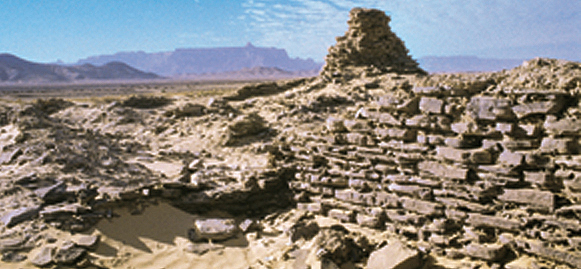Image Details

Courtesy of CIRSA, University of Rome
Inside Aghram Nadharif’s walls is a dense network of houses and streets. Since the citadel was built on bedrock, with no occupation layers after Garamantian times, archaeologists are able to excavate the site simply by removing the accumulated debris of sand and fallen stones. Among the finds are numerous third-century A.D. Roman amphoras used to transport and store olive oil—evidence of the Garamantes’ far-flung trade.
The University of Rome team has also identified another citadel about 15 miles south of Aghram Nadharif. Very likely there were even more—perhaps a chain of desert “cities,” functioning as stopovers along the southern route to sub-Saharan and tropical Africa. The Garamantes would thus have managed a complex commercial network stretching thousands of miles.
